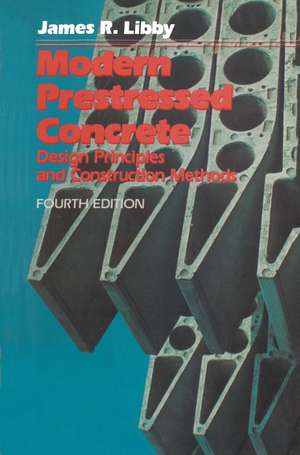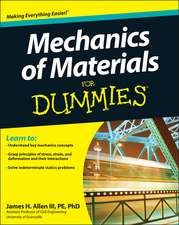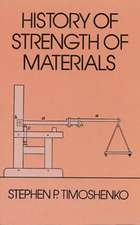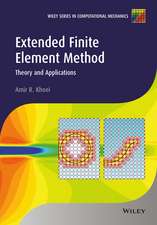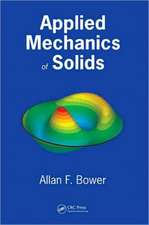Modern Prestressed Concrete: Design Principles and Construction Methods
Autor James R. Libbyen Limba Engleză Paperback – 13 noi 2012
| Toate formatele și edițiile | Preț | Express |
|---|---|---|
| Paperback (1) | 1046.75 lei 38-45 zile | |
| Springer Us – 13 noi 2012 | 1046.75 lei 38-45 zile | |
| Hardback (1) | 1251.37 lei 6-8 săpt. | |
| Springer Us – 29 noi 1990 | 1251.37 lei 6-8 săpt. |
Preț: 1046.75 lei
Preț vechi: 1377.30 lei
-24% Nou
Puncte Express: 1570
Preț estimativ în valută:
200.30€ • 214.19$ • 167.00£
200.30€ • 214.19$ • 167.00£
Carte tipărită la comandă
Livrare economică 14-21 aprilie
Preluare comenzi: 021 569.72.76
Specificații
ISBN-13: 9781461367475
ISBN-10: 1461367476
Pagini: 912
Ilustrații: XVI, 871 p.
Dimensiuni: 155 x 235 x 48 mm
Greutate: 0.59 kg
Ediția:1990
Editura: Springer Us
Colecția Springer
Locul publicării:New York, NY, United States
ISBN-10: 1461367476
Pagini: 912
Ilustrații: XVI, 871 p.
Dimensiuni: 155 x 235 x 48 mm
Greutate: 0.59 kg
Ediția:1990
Editura: Springer Us
Colecția Springer
Locul publicării:New York, NY, United States
Public țintă
ResearchDescriere
This book was written with a dual purpose, as a reference book for practicing engineers and as a textbook for students of prestressed concrete. It represents the fifth generation of books on this subject written by its author. Significant additions and revisions have been made in this edition. Chapters 2 and 3 contain new material intended to assist the engineer in understanding factors affecting the time-dependent properties of the reinforcement and concrete used in prestressing concrete, as well as to facilitate the evaluation of their effects on prestress loss and deflection. Flexural strength, shear strength, and bond of prestressed concrete members were treated in a single chapter in the of flexural strength has third edition. Now, in the fourth edition, the treatment been expanded, with more emphasis on strain compatibility, and placed in Chapter 5 which is devoted to this subject alone. Chapter 6 of this edition, on flexural-shear strength, torsional strength, and bond of prestressed reinforce ment, was expanded to include discussions of Compression Field Theory and torsion that were not treated in the earlier editions. In similar fashion, expanded discussions of loss of prestress, deflection, and partial prestressing now are presented separately, in Chapter 7. Minor additions and revisions have been made to the material contained in the remaining chapters with the exception of xv xvi I PREFACE Chapter 17. This chapter, which is devoted to construction considerations, has important new material on constructibility and tolerances as related to prestressed concrete.
Cuprins
1 Prestressing Methods.- 2 Steel for Prestressing.- 3 Concrete for Prestressing.- 4 Basic Principles for Flexural Design.- 5 Flexural Strength.- 6 Flexural-Shear, Strength, Torsional Strength, and Bond of Prestressed Reinforcement.- 7 Loss of Prestress, Deflection, and Partial Prestress.- 8 Additional Design Considerations.- 9 Design Expedients and Computation Methods.- 10 Flexural Continuity.- 11 Direct Stress Members, Temperature, and Fatigue.- 12 Connections for Precast Members.- 13 Roof and Floor Framing Systems.- 14 Bridge Construction.- 15 Pretensioning Equipment and Procedures.- 16 Post-Tensioning Systems and Procedures.- 17 Construction Considerations.- 18 Erection of Precast Members.- Appendix A. Recommendations for Estimating Prestress Losses.- Appendix B. Excerpts from the Eleventh, Thirteenth, and Fourteenth Editions of the Aashto Standard Specifications for Highway Bridges.- Appendix C. Estimating Prestress Losses, by Paula Zia, H. Kent Preston, Norman L. Scott, and Edwin B. Workman.
